History
| The history of the School of Physics begins with the establishment of Kharkiv University in 1805. One of the Departments in the Physical and Mathematical Department was the Department of Theoretical and Experimental Physics. It was the first headed by a Serb A. I. Stoikovych, a brilliant lecturer and one of his disciples was V.S. Komlyshynskyi who became the Head of the Department in 1813. He was first to defend a thesis for Doctor of Philosophy in Physics in the University and during 35 years he was involved into educational and academic activities. First research, closely connected with practice, was started by a resident of St. Petersburg V.I. Lapshyn, who became the Head of Physics and Physiography Joint Department in 1839. He was first to provide electric lighting for some streets in Kharkiv, he ran the famous public galvanic experiments and worked on the project of the city water supply system. Later the Department was again headed by graduates of Kharkiv University, such as Y.I. Morozov (1864-1867), whose works covered issues of physiography and meteorology, A.P. Shymkov (1867-1899) and A.K. Pohorelko (1900). From 1880 another graduate of Kharkiv University N.D. Pylchykov worked at the Department. He was a talented scientist, innovator and excellent lecturer. He published about 50 works from different spheres of physics where he combined experimental and theoretical approaches. N.D. Pylchykov became one of the first explorers of the Kursk magnetic anomaly and many times represented the science of the University at international conferences. From 1904 the Head of the Department was O.P.Hruzyntsev, a graduate of Karazin University, who was involved into public activities, read lectures on physics, wrote courses of experimental and theoretical physics and published a great number of scientific works. Finally, from 1914 to 1921 the Department was headed by D.A. Romanskyi, a brilliant scientist and organizer of science, a graduate of St. Petersburg University and the University of Berlin, who established the first scientific school of radiophysics in Kharkiv University. From 1914 during the period of five years, T.P. Kravets, an outstanding scientist and a graduate of Moscow University worked at the Department. Along with scientific and academic activities, this highly educated physicist and eminent lecturer conducted considerable organization activities and studied the history of physics. Thus, during the whole pre-revolutionary time of physics development in Kharkiv University, only V.I. Lapshyn, N.D. Pylchykov, A.P. Hruzyntsev, D.A. Rozhanskyi and T.P. Kravets made a valuable contribution to the science. At the same time teaching of the general physics course was at a very high level; special courses were introduced and specializations in different spheres of physics practically appeared. In 1805 the School consisted of four persons (Head, his aide, Office supervisor and tool master), but in 1916 there were already 13 workers but for laboratory assistants. Devlopment of physics in Kharkiv University began with the reconstruction of the University in 1933. After the period of reconstruction of institutes and universities, the new University was built on the basis of the Institute of Physics, Chemistry and Mathematics and the Pedagogic Institute of Vocational Education, which were direct successors of the old University. From 1 October 1933 the School of Physics and Mathematics started again. A.V. Zhelekhovskyi, a Ukrainian physicist, professor and the author of the first text-book on general physics in Ukrainian became its Dean. He had already been among the leaders in the initiative group of Kharkiv physicists and a direct initiator of Ukrainian Physics and Technology Institute (UPTI) in Kharkiv. From that time the Physical Department consisted of four Departments. The Department of Experimental Physics was headed by Professor A.V. Zhelekhovskyi. In 1935 Professor L.D. Landau came to the School and soon was placed at the head of the School. Having begun his work with teaching of general physics, he proceeded to deliver his famous course of theoretical physics. |
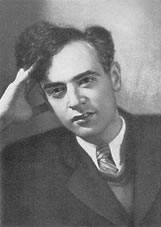
|
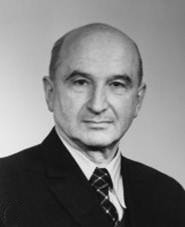 |
During this time he published the first volume "M echanics", written together with L.M. Piatyhorskyi, and finished the second volume “Statistical Physics”, written in co-authorship with Y.M. Lifshits. L.D. Landau encouraged development of theoretical physics research in the University. His intuition and breadth of scientific interests contributed to emergence of the most urgent issues of physics in scientific subject matter, which distinguished itself through concrete connections with experimental research. |
| L.D. Landau applied efforts and established Kharkiv School for Theoretical Physicists. In 1940 the Department of General Physics, where Reader A.S. Milner was placed at the head, separated from the Department of Experimental Physics. Here scientists proceeded magnetic phenomena research and conducted physics teaching for students of non-physical professions of the University. The Department of Theoretical Physics was initially headed by Professor L.V. Rozenkevych, a representative of Leninhrad Physics School, who came to Kharkiv with the first group of the scientists that later found the UPTI. Together with L.D. Landau and Y.M. Lifshits, he published a book of problems for theoretical physics. In 1936 there appeared the specialization of “theoretical physics”. | 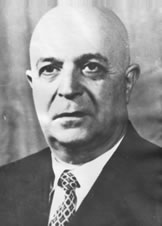 |
| A.S. Milner |
| From 1940 the Department was headed by O.I. Akhyiezer, and by V.L. Herman from 1943 to 1944. In 1944 this Department was divided into two ones: I.M. Lifshits became the head of the Department of Statistical Physics and Thermodynamics and O.I. Akhyiezer headed the Department of Theoretical Nuclear Physics. The Department of Magnetic Metering was headed by Professor D.S. Steinberg, under whose direction the research of ferromagnetic materials was conducted.In 1935, when D.S. Steinberg suddenly died, the Head of the Department was Professor L.V. Shubnikov, who adapted it for teaching of cryogenic technologists and pursuing researches of superconnductors. After that it became the Department of Solid State. From 1937 its Head was B.Y. Pines, who gave it a new name of the Department of Solid State Physics. This Department studied metals and alloys. | 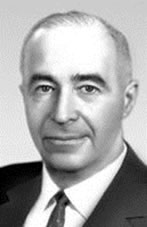 |
| I.M. Lifshits |
| The Head of the Department of Electromagnetic Oscillation, renamed into the Department of Applied Physics in 1939, was Professor A.A. Slutskin, D.A. Rozhanskyi’s disciple. He administrated study in mechanism and production conditions of powerful electromagnetic oscillation in ultra-high frequency band and devised dosimetry meth ods. After A.A. Slutskin’s death, from 1950 the Department was headed by Reader V.K. Tkach. The foundation of the UPTI affected development of physics in Kharkiv University. The Institute caused changes in educational, scientific and organization preparation of physicists, who stayed to work as a rule there. Many scientists of the Institute started teaching fundamental and special courses to the students in the University, and the lecturers of the University took an active part in the operation of its laboratories. With the help of the UPTI good resource base, this gave an opportunity, to extend the scientific research in the University and put in place a large-scale preparation of high-skilled personnel. Along with L.V. Shubnikov, L.D. Landau, Y.M. Lifshits, I.M. Lifshits, O.I. Azyiekher, L.V. Rozenkevych and B.Y. Pines, the University welcomed I.Y. Pomeranchuk, A.K. Kikoin, A.S. Kompaniiets, M. Ruemann, K.D. Synelnykov, A.K. Valter, V.S. Horianskyi, Y.S. Borovyk and others, who became the pride of the science in our country. |
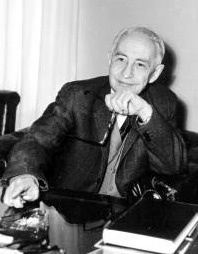 |
From 1937 to 1941 3 theses for Doctor of Philosophy and 13 Candidate’s dissertations were accepted, that exceeded the number of the defended theses in 1805-1917. The rapid growth of science in 1930-s turned the University into one of the best educational and scientific centers of physics. During World War II the University, evacuated to the city Kyzylorda, represented physics through only one Department, headed by K.D. Synelnykov, but scientific studies were intensively proceeded in different spheres of physics. After the war the demand for physicists steeply grew, that influenced separation of the Department of Nuclear Physics from the School of Physics and Mathematics in 1948 and foundation of the School of Radio Physics in 1952. |
| K.D. Synelnykov |
| When the University changed its residence in 1962, the School of Physics and Mathematics was divided into three schools, those were the School of Physics, the School of Mathematics and Mechanics and the School of Physics and Technology. From that time a new period in the history of the School of Physics began; there appeared new scientific directions, Departments and laboratories. Though skilled physicists began to work at newly-made research institutes, such as Institute for Low Temperature Physics and Engineering (ILTPE), Institute of Radiophysics and Electronics (IRE) and Institute of Monocrystals, scientific departments of the School proceeded to grow and provided the departments of new institutions and their traditional consumer UPTI with young graduates from the School of Physics. Despite formal obstacles, the School of Physics tried to keep closely associated with academic institutes and encouraged students, post-graduates and prominent specialists from these institutes to teach and conduct researches on terms of combining jobs and hourly earnings. In 1962 the School of Physics consisted already of 6 Departments. |
| The largest one was the Department of Experimental Physics, headed by the future corresponding member of NAS of Ukraine V.H. Khotkevych. It was him to be the first Dean of the School of Physics and to become later the President of the University. Interrelationship with the ILTPE caused the separation of the Department of Cryophysics, headed now by Professor M.O. Obolonskyi, from the School on the basis of the corresponding specialization in 1979. After V.H. Khotkevych’s death, in 1983 the Head of the Department of Experimental Physics was Professor V.M. Andronov, and since 2002 it has been headed by Professor V.P. Lebediev. The Head of the Department of Statistical Physics and Thermodynamics was Member I.M. Lifshits, a successor of the widely known School for Theoretical Physicists, L.D. Landau’s associate. |
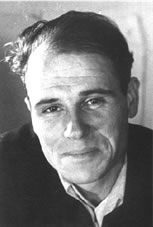 |
| V.H. Khotkevych |
The main scientific orientation of the Department was the condensed state theory. In 1968 after L.D. Landau’s death, I.M. Lifshits was invited to his office at the Institute for Physical Problems of USSR Academy of Sciences. |
 |
The Department of Solid State Physics was headed by Professor B.Y. Pines. He was a prominent scientist, whose name is connected with the establishment of the School of experimentalists in the sphere of solid state physics, invention of physical theory of sintering and new methods of X-ray and electron diffraction analyses. After B.Y. Pines’ death in 1968, the Department was headed many years by his disciple Professor A.F. Sirenko. Since 1994 its Head has been Professor Z.Z. Zyman. |
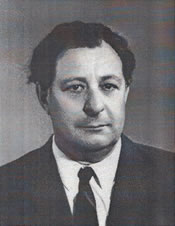 |
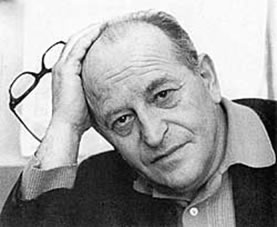 |
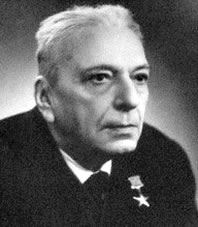 |
| Y.Y. Hehuzyn | M.P. Barabashov |
| There appeared another two Departments of physical specialization: the Department of Physical Optics headed by Professor I.M. Shkliarevskyi, who passed the office to Professor V.K. Myloslavskyi in 1991, and the Department of Crystal Physics, established by Professor Y.Y. Hehuzyn, and since 1988 it has been headed by Reader V.I. Kibets. Another two departments were included in the School of Physics: the Department of Higher Mathematics, headed first by Reader Z.S. Ahranovych and then by Readers V.K. Dubovoi and Y.M. Diukarev, and the Department of Astronomy with Member M.P. Barabashov and since 1978 Professor Y.V. Aleksandrov at head. |

